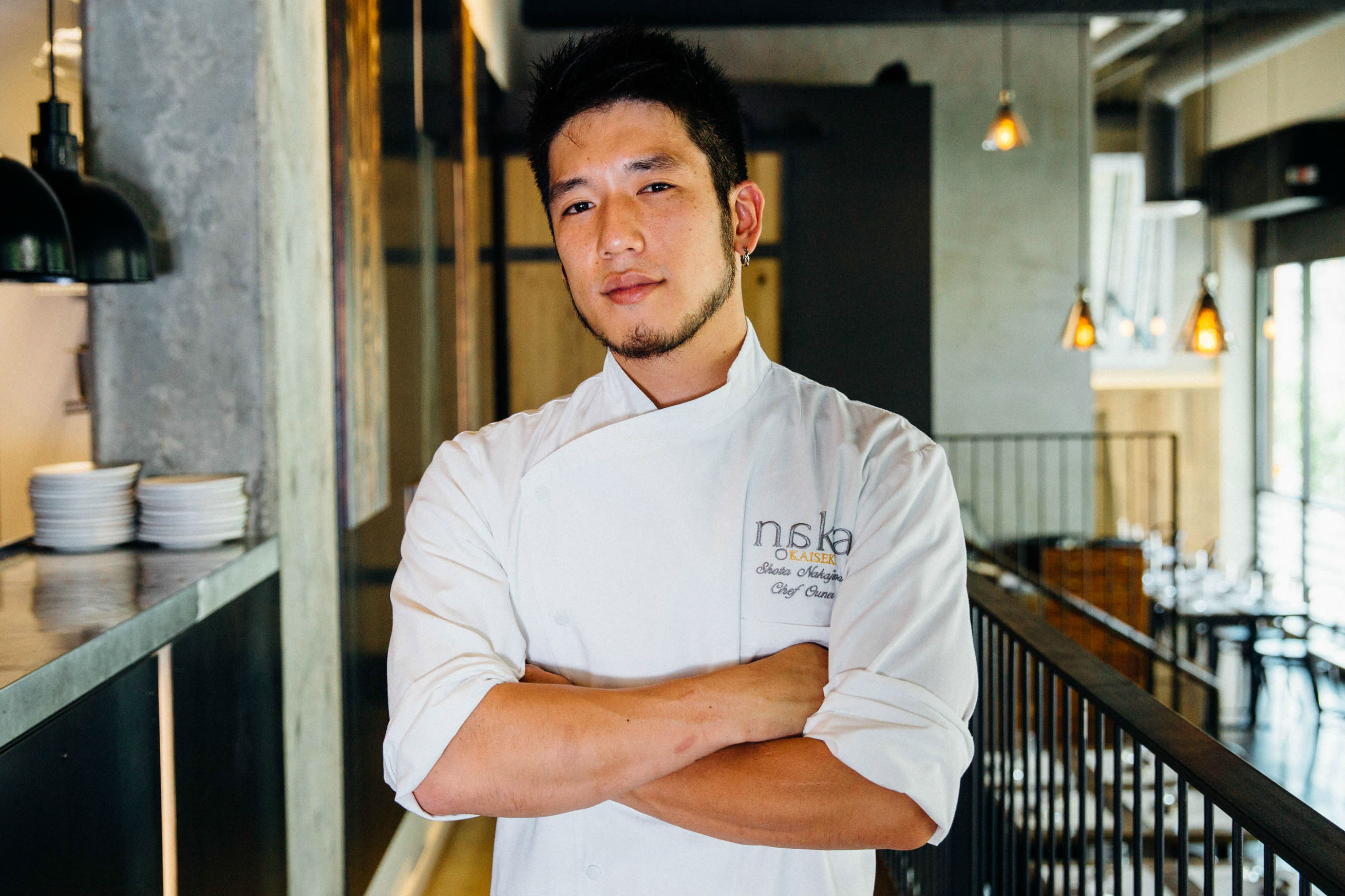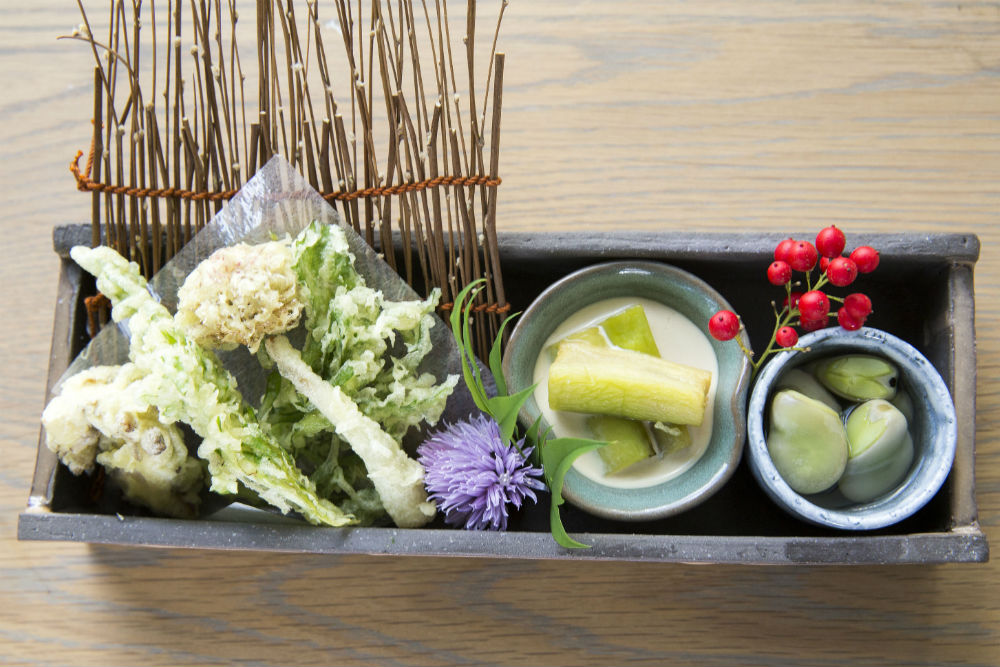
Chef/Owner, Shota Nakajima, chef/owner of Capitol Hill’s Naka, exalts the Japanese seasonal dining concept of Kaiseki by blending the freshest ingredient with modern technique and traditional aesthetics. We asked him three questions to get to the core of his food philosophy—and what we learned left us intrigued and hungry for more.
How did you get into cooking? Describe your road to Naka.
At 16 I got my first job as a dishwasher in a family owned Japanese restaurant. At the time I wasn’t thinking that I would be in this industry for the rest of my life. I fell in love with the lifestyle and cooking for people. To be able to serve guests. At the age of 18 I moved to Japan to learn the craft of cooking from the best of the best. I ended up working for a Michelin Star restaurant in Osaka, Japan called Sakamoto where I learned the craft and the mentality of serving the best food. I wanted to convey the beauty of Japanese culture, which hadn’t been communicated in the States. I came back to US at the age of 23 and worked restaurant jobs as well as corporate management jobs to understand everything I needed to of how to open a restaurant. Google and YouTube was just not enough. Finally, in summer 2015 I opened Naka, two month before I turned 26.
Do you use recipes?
While we have basic recipes for some things the food we prepare is not at all restricted by them. We change the flavor of the food depending on the weather, or simply because we feel like serving it a little differently. Food in general keeps evolving, which means the chef’s palate will change over time as well. We should constantly be thinking of this when we cook.
What is TRA?
The base of our cooking times for our recipes is TRA, which stands for The Right Amount, and if you don’t understand what this means you don’t belong on the line of Naka.


